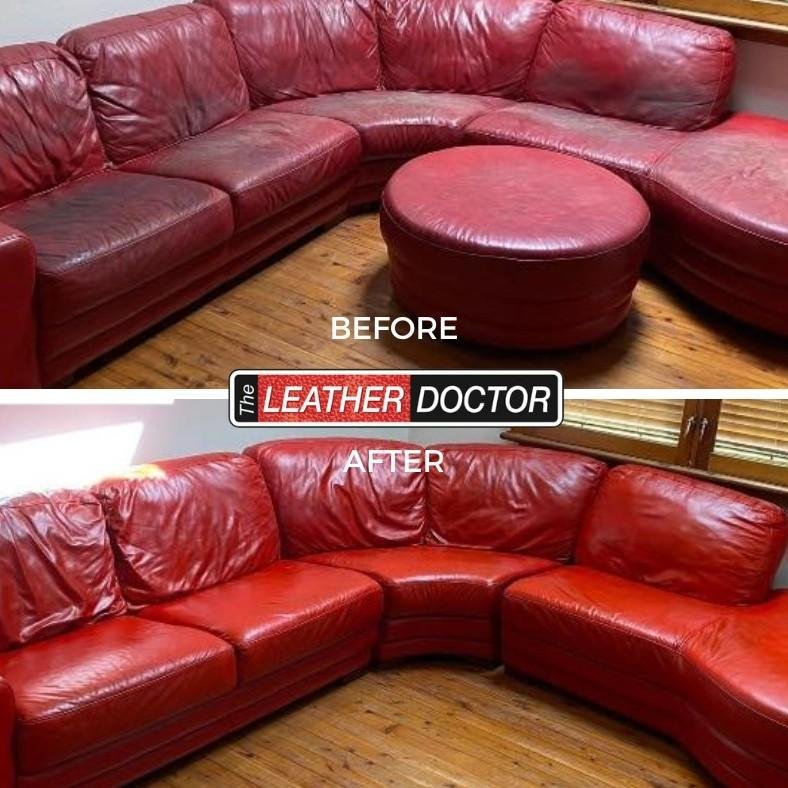Leather is a timeless and luxurious material used in various items, such as furniture, clothing, and accessories. Its durability and versatility make it a popular choice. However, even the finest leather can encounter issues over time. Knowing how to fix these problems and when to seek professional leather repair services can significantly extend the life of your leather items and keep them looking their best. This guide will explore common leather issues, techniques, and when to consult a professional leather repair service.
Understanding Leather and Common Leather Problems
Leather is a natural material derived from animal hides, primarily cows. After going through the tanning process, it becomes durable and flexible, making it ideal for upholstery, fashion, and accessories. Despite its strength, leather is susceptible to various issues caused by daily use, environmental factors, and accidents.
Common Leather Repair Issues
Scratches and scuffs are some of the most common problems with leather items. Everyday use or accidental contact with sharp objects can result in visible damage. Superficial or deep scratches can affect the leather’s appearance and texture. Stains are another frequent issue since leather easily absorbs liquids like food, drinks, and ink. Prolonged exposure to sunlight or harsh lighting can also cause leather to fade, diminishing its color and vibrancy.
Cracking and dryness are significant concerns for leather as well. Without proper conditioning, leather can dry out and develop cracks. This typically occurs due to a lack of moisture and exposure to dry environments. Tears and rips may develop due to stress or accidental damage, compromising the item’s structural integrity. Mold and mildew can also appear on leather if it’s exposed to high humidity and poor ventilation, leading to damage and potential health risks.
Leather Repair Techniques: Fixing Common Leather Problems
Fixing Minor Scratches and Scuffs with Leather Repair Kits
For minor scratches and scuffs, applying a leather conditioner is an effective repair method. Start by applying a small amount of leather conditioner to a soft cloth and gently rubbing it into the scratched area in a circular motion. This will blend the scratch with the surrounding leather and restore its natural oils. If the damage is more visible, consider using a kit. These kits often include a repair compound that matches the color of your leather. Follow the instructions, allow the compound to dry, and then buff the area for a seamless finish.
Stain Removal: Tips for Leather Repair
When dealing with stains, blot the area with a clean, dry cloth immediately to absorb as much of the stain as possible. For oil-based stains, sprinkle baking soda on the affected area, let it sit for a few hours, and then brush it off gently. If the stain persists, use a leather cleaner designed for your specific type of leather. Always follow the product’s instructions carefully to prevent additional damage during the cleaning process.
Addressing Leather Fading and Repairing It
If your leather item has faded, a leather conditioner with color restoration properties can help. These products can revive the leather’s original color while protecting it from further fading. For severe fading, re-dyeing may be necessary. Apply leather dye to the affected area to restore the original color, but remember to test the dye on a small, hidden spot first to ensure a good match.
Repairing Cracks and Dry Leather
To repair cracks and dryness, apply a generous amount of leather conditioner to the affected area. Conditioning the leather will soften it and reduce the appearance of cracks. For deeper cracks, a leather filler can help fill in the gaps. Follow the manufacturer’s instructions carefully when using the filler to achieve a smooth, even finish.
Fixing Leather Tears and Rips: DIY or Professional Help?
Small tears and rips can be repaired with a patch. Clean the area around the tear, apply adhesive, and place the patch over the damage. For larger or more complicated tears, professional leather repair services are often the best option. Professional leather repair specialists can ensure a seamless and durable fix, particularly for high-value items.
Tackling Mold and Mildew in Leather Repair
Mold and mildew on leather require immediate attention. Mix equal parts of water and white vinegar and dampen a cloth with the solution. Gently clean the affected area to remove the mold. If the problem is extensive, professional treatment may be necessary to prevent further damage and ensure thorough cleaning.
When to Seek Professional Leather Repair Services
While DIY leather repair can fix many minor issues, some situations require the expertise of a professional leather repair service. Extensive damage, such as large tears or widespread cracks, often needs specialized skills and tools. If your leather item is valuable, such as antique furniture or a designer handbag, it’s wise to consult professionals to preserve its integrity and value. Additionally, specialized repairs like re-dyeing or significant mold treatment should be handled by experts with the appropriate tools and knowledge. If your DIY efforts haven’t been successful, it’s time to contact a professional leather repair specialist for a more refined repair.
Choosing the Right Leather Repair Service
When selecting a vinyl and leather repair service, ensure they have experience and expertise in leather restoration. Look for services with positive customer reviews and a solid track record. Many reputable companies offer a warranty on their repairs, giving you peace of mind and ensuring high-quality workmanship.
Conclusion: Leather Repair for Longevity
Leather is a beautiful and durable material, but it needs proper care and timely leather repair to maintain its appearance and functionality. By understanding common issues and techniques, you can address minor problems yourself. However, for significant damage or high-value leather items, seeking professional leather repair services is the best way to guarantee top-notch results. With the right care, your leather items will continue to serve you well for many years to come.



